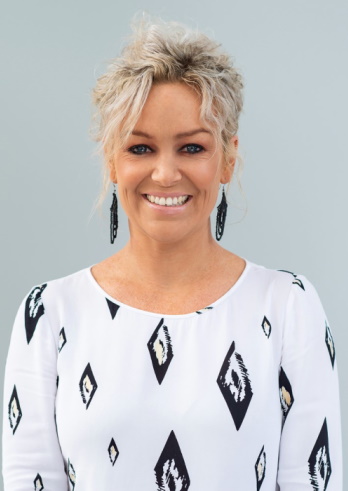
Improving the quality of living for our senior citizens has spurred the need for practical design innovations in aged care facilities. These three compelling issues are the main drivers for this imperative:
- The challenges of providing, maintaining, and complying with optimum health and safety levels in the wake of COVID-19.
- Findings from The Royal Commission into Aged Care Quality and Safety that resulted in 148 reform recommendations.
- With the increasing elderly population, more attention and greater compassion must be given to provide better standards in our aged care system.
Aged care facilities have changed over the years – from their historic roots as poorhouses and asylums to traditionally designed institutions with long corridors and bland surroundings. Itis time to move forward with new design solutions to address these issues and uplift our senior citizens’ standard of living.
The Small House Model
Among the recommendations mentioned in The Royal Commission’s report was to apply the “small house model”. This was originally conceived in the US to de-institutionalise senior living conditions. Since residents have always lived in family homes, it would stand to reason that they would feel more comfortable living out the rest of their years in homely accommodations, rather than in an institutionalised aged care facility.
The small house model is more human-centred to provide a sense of normality and independence. A small number of senior citizens will reside in this house concept where they can have individual bedrooms and can access the kitchen, dining, and living areas.
In a 2015-2016 Flinders University study, researchers concluded that home-like models with fewer residents provide better living standards, improved health benefits, and lower rates for hospitalisation and emergencies. To quote from the findings, “Clustered, home-like models of residential aged care led to better quality of life for residents.”
The Pandemic Impact
Last January, Covid-19 outbreaks were reported in more than 700 aged care homes across Australia. According to public health researcher Dr Sarah Russell, director of Aged Care Matters, “Many of these large aged care homes are not designed to cope with an airborne virus. For example, in many homes, it is not possible to open windows in residents’ rooms. Without good ventilation, Covid has spread like wildfire in aged care homes.”
Incidents like these have heightened the urgency to explore design alternatives of aged care facilities. Sadie Burling, a registered nurse and Health & Ageing Business Development Manager at Australian construction company Paynter Dixon, has also remarked on this issue. “The pandemic has shown that even the newest of buildings doesn’t always accommodate some of the infection control processes that are required during a pandemic.”
Design Guidelines to Improve Ventilation in Aged Care Homes
Five key points were identified to guide architects and building designers in transforming aged care institutions into more humane and liveable spaces for the elderly. These are: maintaining air quality, regulating interactions, protocols to control infection, creating outdoor spaces, and managing admissions area. Ensuring that senior citizens receive optimum ventilation 24/7 in these facilities is a vital necessity that must be prioritised.
Elderly residents, particularly those in traditionally designed aged care institutions, spend up to 20 hours a day indoors. Access to natural air can be difficult, especially for those with limited mobility or residents with dementia who need to stay in their wards for security reasons. Whilst most aged care homes have windows that can be opened manually to allow natural ventilation, this is not always the case for the rest of the year. Windows are often kept closed during the colder months to keep occupants warm.
This presents a major concern as it severely limits the flow of natural air, especially in corridors and large common areas of the facility. As a result, the residents are exposed to low ventilation and risk inhaling harmful pollutants, dust, mould, bacteria, airborne viruses, toxic fumes, and cleaning chemicals.
The World Health Organization (WHO) has provided evidence to suggest that a high risk of infection can occur in areas with insufficient ventilation. The WHO highly recommends that health care facilities – including aged care institutions – should install appropriate ventilation systems. This will help to prevent the spread of airborne infectious diseases and to manage the quality of indoor air.
Whilst air purification devices may help to decontaminate indoor air, a more sustainable solution is needed to increase fresh, natural airflow and maintain indoor air quality. Technological innovations must be applied to provide real-time decontamination and a safer environment with cleaner air.
Safetyline Jalousie: supporting a safer, healthier, more comfortable senior living environment
There is no doubt that louvre windows have always provided the best solution for maximising air flow and ventilation in buildings.
In the past however, traditional louvre windows have been overlooked in aged care settings due to safety, security, fire and other regulatory obstacles.
Safetyline Jalousie, in conjunction with its strategic partners, has developed a solution to overcome these obstacles and deliver innovative ventilation options for all buildings.
There’s no longer any need to compromise on ventilation.
The SmartAir System couples Safetyline Jalousie’s high performance motorised louvre windows with sensor activated control equipment that can detect unhealthy c02 levels as well as climate and temperature changes. This will trigger the windows to open (and close) automatically – removing the need for constant human input — to allow the continuous circulation of fresh air, reduce odours and harmful elements in the indoor air, and support safer breathing spaces for the most vulnerable residents.
Additionally, the system is adapted to recognise morning or night purges, interlock air conditioning, automatically close due to rain or wind and also automatically lock for security.
With the SmartAir system, Safetyline Jalousie hope to play our part in safeguarding the health and wellbeing of our aging population and help provide a better standard of living. We also believe that every project and space is entitled to the benefits of motorising and automating the monitoring and control of air quality.
For aged care projects across Australia, including retrofitting existing projects along with both present and future builds, Safetyline Jalousie offer the opportunity to add our SmartAir louvre motors to any windows quote completely free of charge.
By offering motorised louvre windows at the same cost of manually operated louvre windows we hope to alleviate any cost prohibiting factors that would influence the quality outcome of the project.
For more information about the positive effects of louvre windows in senior living facilities, view a digital copy of our brochure on “Louvre Windows: A Breath of Fresh Air for Aged Care Facilities” plus download our full SmartAir System proposal.






















